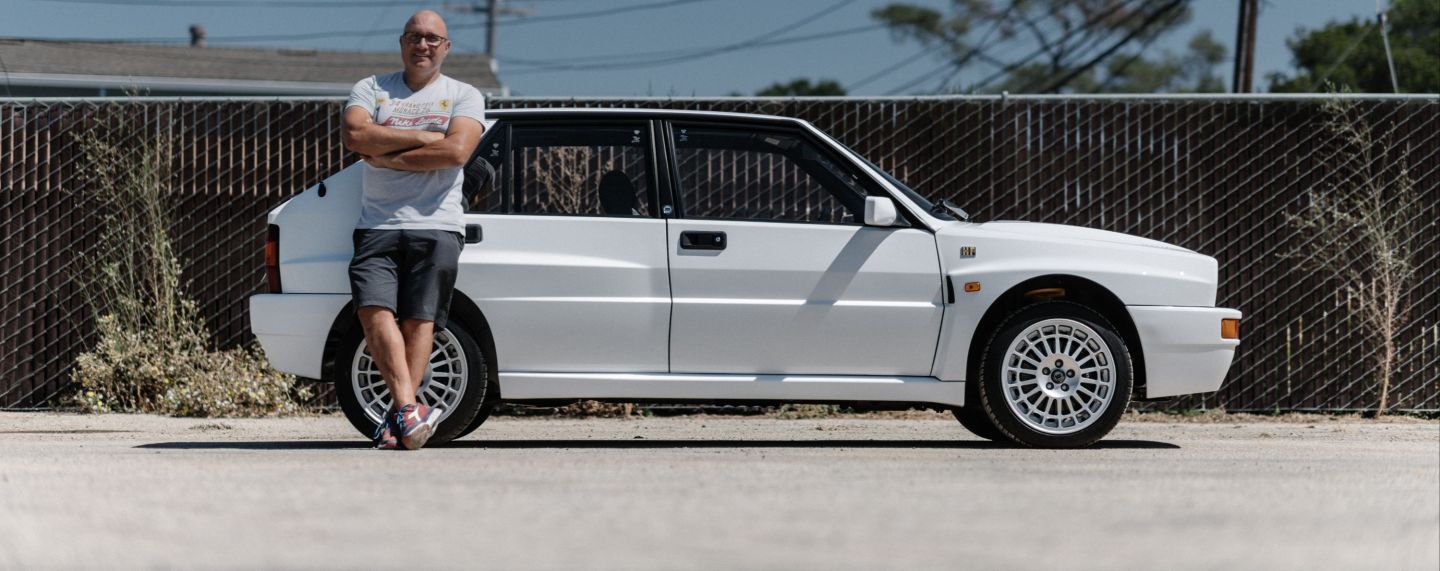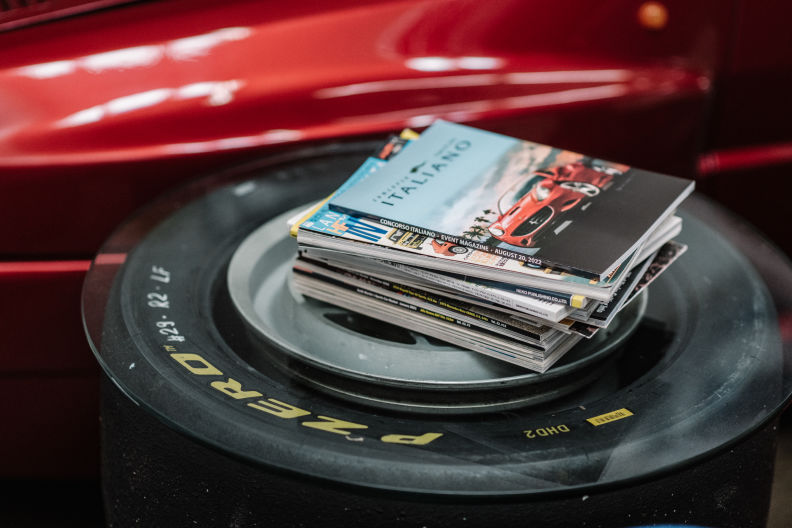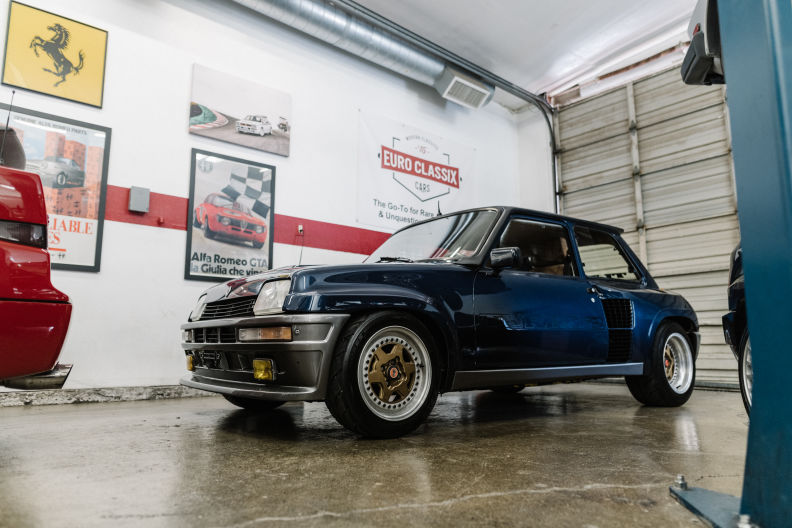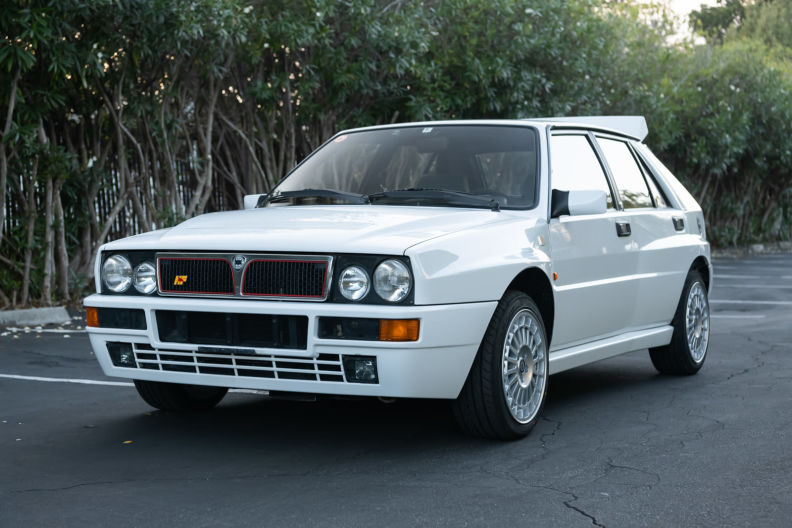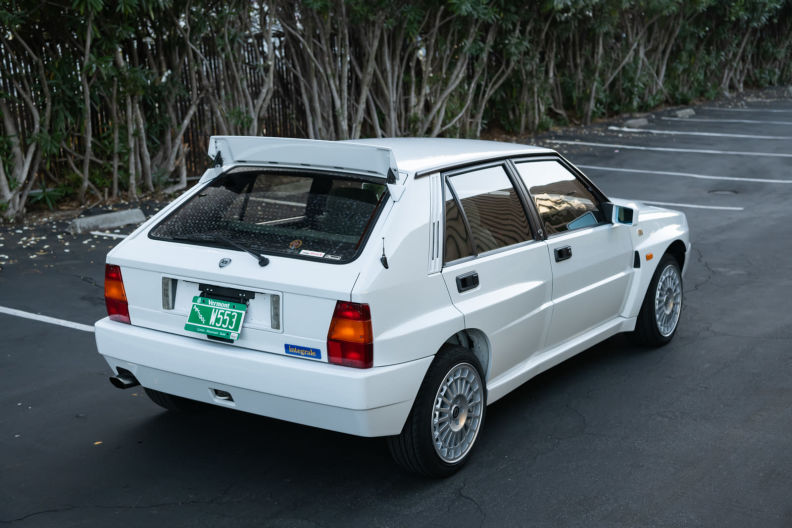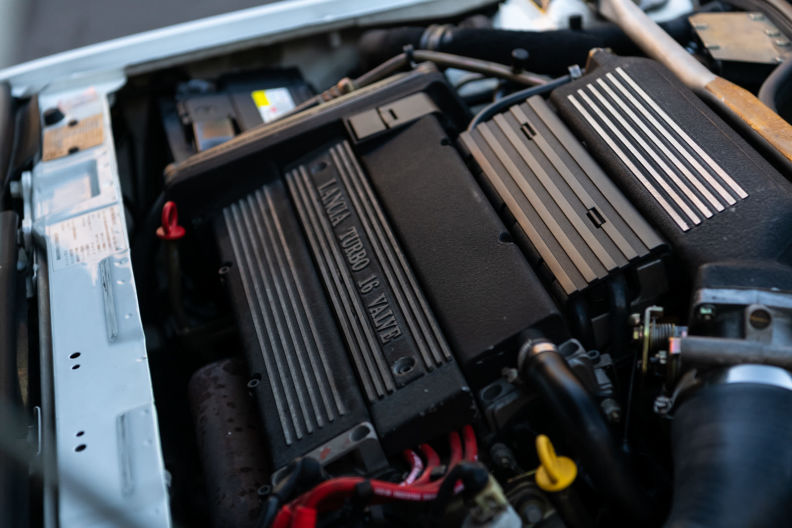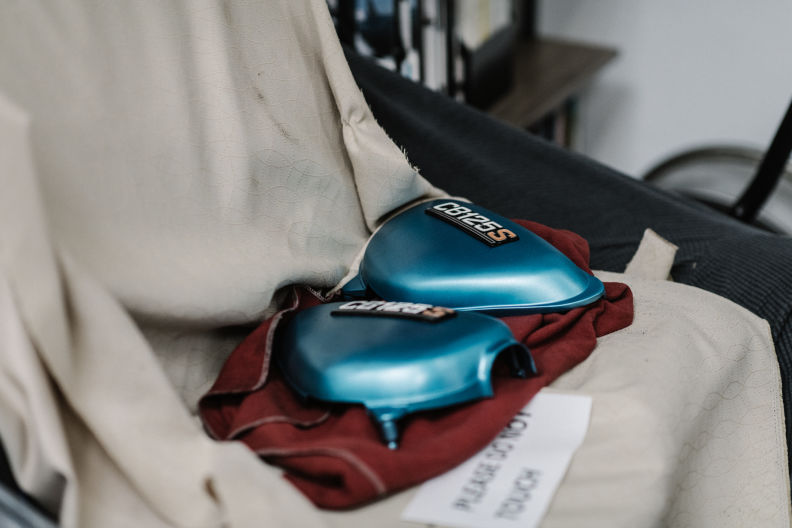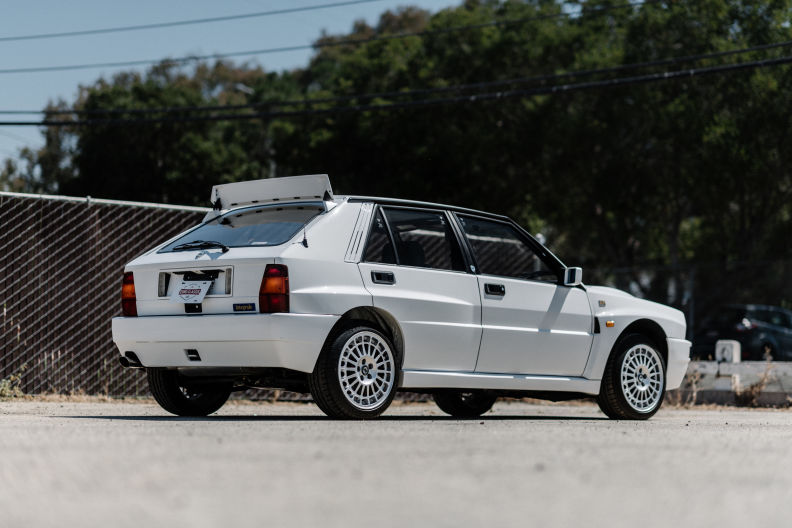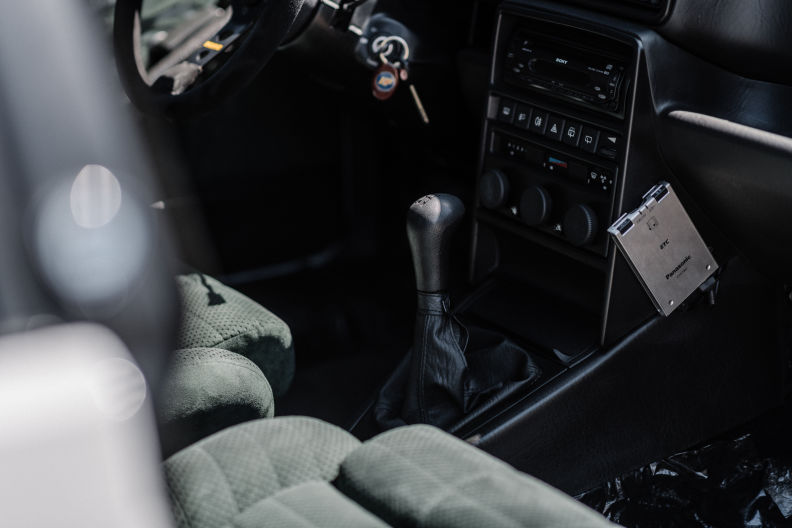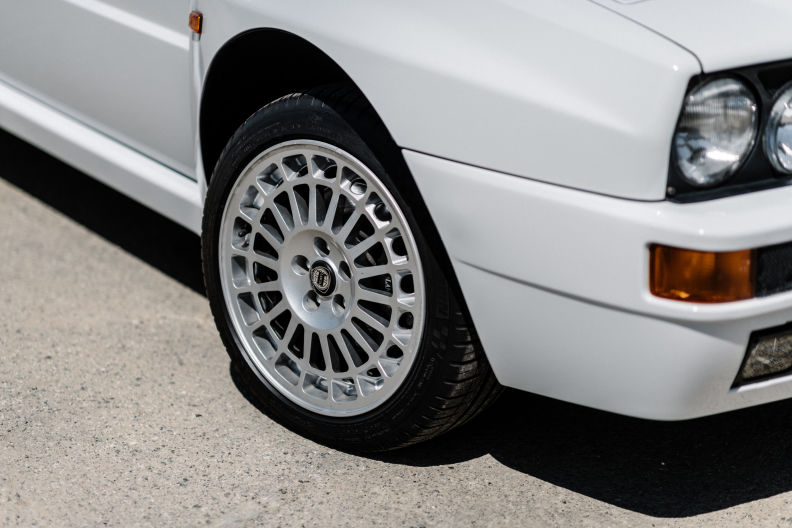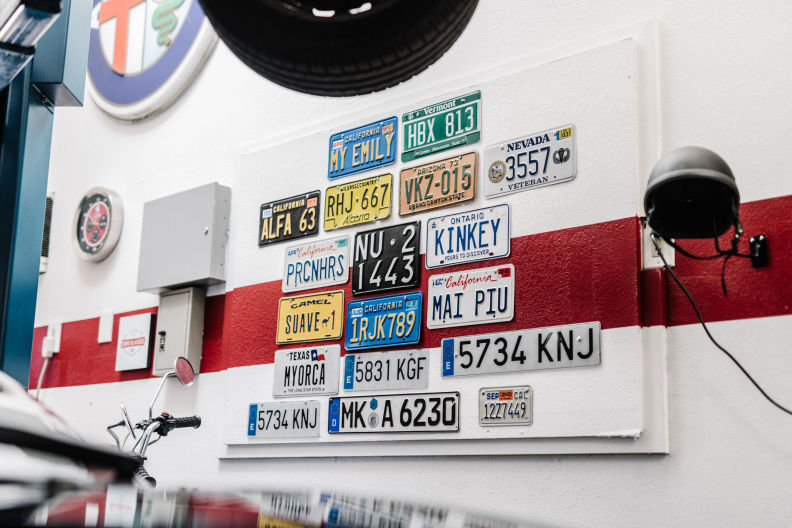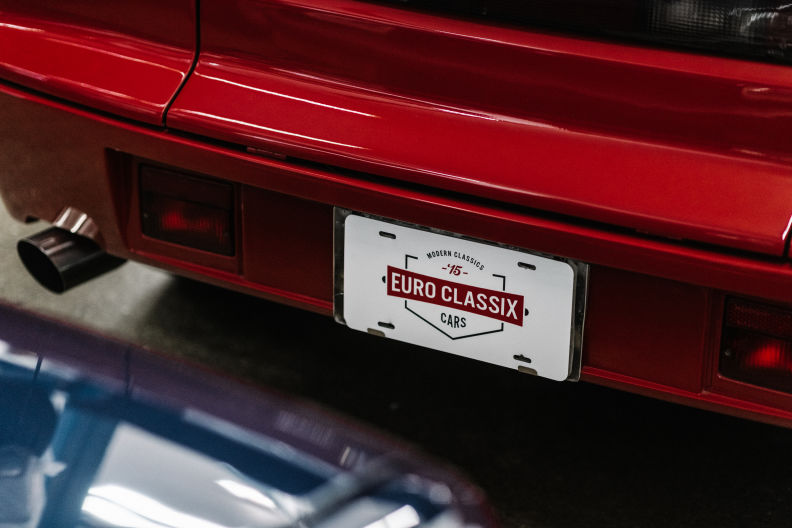Feature
Tasting forbidden fruit: An interview with Marco Marini of EuroClassix
Written by Aaron McKenzie, Photographed by Courtney Frisk
Reading, it turns out, can be a dangerous activity. One day, you’re quietly reading a book at home, the next day you’re down at the local port, amidst cranes and container ships, taking delivery of a car that was once illegal on American shores.
Just ask Marco Marini. Some years back, Marini, a digital marketer by trade, found himself reading Gary Vaynerchuk’s 2009 book Crush It! and was struck by Vaynerchuck’s definition of success, which had nothing to do with money or prestige or professional accolades. These things, argues Vaynerchuk, are merely the outcome of success, which he defines as passion for one’s vocation.
Writes Vaynerchuck: living your passion “means that when you get up for work every morning, every single morning, you are pumped because you get to talk about or work with or do the thing that interests you the most in the world. You don’t live for vacations because you don’t need a break from what you’re doing—working, playing, and relaxing are one and the same.”
Photographed by Courtney Frisk
After all, what have you really achieved, aside from making yourself miserable, if your first thought upon waking up on a Tuesday is, “How many days until Friday, until I don’t have to do what I’m doing today?”
For Marini, work, play, and relaxation come together in the form of cars, and specifically cars that were never sold new here in the United States. Like many young kids growing up in North America, he saw the Renault 5 Turbos and Delta Integrales and RS Cosworths that dominated the World Rally Championship in the late-1980s and early-1990s and wondered, “Why can’t we have nice things, too?” And so, after reading Vaynerchuk’s book, Marini decided to stop wondering and take action.
Which brings us to EuroClassix Cars, which Marini co-founded in 2015 in California’s Bay Area and which helps find and import cars now made available by the so-called “25-Year Rule” (more on which below). Marqued’s Aaron McKenzie recently sat down with Marini for a conversation about why Japan is often the best place to find vintage European cars; on how to navigate the 25-Year Rule if you’re really in love with an 18-year-old car; and the allure of forbidden fruit.

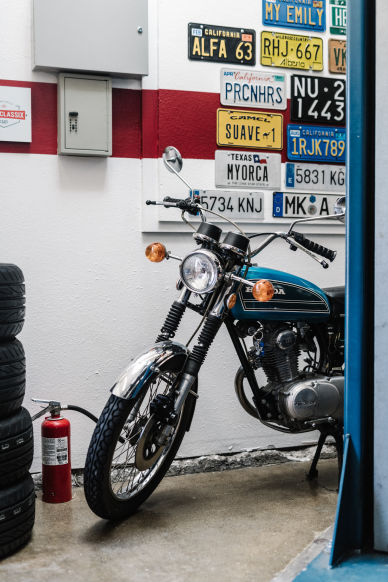
Photographed by Courtney Frisk
Aaron McKenzie: Your name obviously suggests an Italian heritage, but I'm curious, where'd you grow up and what cars were around you as a kid?
Marco Marini: I am Italian, yes. My mother is one of eight brothers and sisters, all of whom are from Rome, but I was born and raised in Toronto. My parents were college professors, though, so we all had the summers off. And so, growing up, I spent all my summers in Italy and all five of my uncles are car guys. We would go out on Sunday for dinner with all the extended family and then my uncles would have a car race on the way home. They had Giulia Supers and 1750 Berlinas, 911s, Fiat Dinos, and 2002 Tiis, so that’s how I got hooked back in the mid-1970s through the mid-1980s.
Aaron: Just because you’re Italian, though, doesn’t mean you’re required to be attached to Italian cars. So, what is it about cars like the SZ and the Delta Integrale, or that generation of Italian cars, that captivates you?
Marco: To be honest with you, I didn't really know about the SZ until later, but the Delta Integrale…I’ve just always lusted after those cars. There’s just something about them. I used to follow the WRC, so back in the late-1980s, when the Integrale was winning everything, it was great. But actually owning an Evo 1 or an Evo 2? That was just unheard of, even in Italy. You had to be somebody special. It was just a car that I always lusted after.
A lot of people had Countach posters and stuff like that – and those are amazing cars, too – but for me it was more about the Integrale, the RS Cosworth, cars like that. I have a Renault 5 Turbo 2 right now, which I'd always wanted to have.
Photographed by Courtney Frisk
That’s just the era of cars that I’ve always lusted after. There's something about these cars and their design cues. The Integrale has so many little corners and edges and angles. The cockpit, all the dials, the seating position…it's just something you have to experience. I've had gentlemen who have massive collections of million-dollar cars who come and drive an Integrale and they always get out with a smile on their face. There's something special about that particular car. A lot of it is just an emotional connection for people.
Live Auctions from EuroClassix
1993 Lancia Delta Integrale Evo 1
"Highly collectable and original Evo 1 with only 12k original and documented miles. Factory plastic still on door panels and carpeting. Upgraded 16" new wheels with new tires. Highly original with exception of the steering wheel, which has been upgraded." - Marco Marini
Live on Marqued Auctions
Aaron: I’ve heard you say you started EuroClassix as a hobby. How has it evolved into what it is today?
Marco: I used to find myself scouring the internet in Italy. I'd find a car that made me think, "Oh, that might be worth a little bit more here in the States. Maybe I'll bring it in."
And so, I was importing these cars one at a time. I’d drive them for a while, and then turn around and sell them and make a few bucks – or at least break even. The process was just fun: I loved the whole process of going to the port, getting the car, firing it up, and then going through it and making it perfect in my eyes.
The first two years of this were fun, but we lost our shirts. Cars were coming over from Italy with issues, even though they were supposedly in good condition or had been “fixed and repaired” over there. I go over the top on repairs to make sure the cars are exactly the way they need to be and try to minimize any issues on the back-end after cars have sold. Fortunately, I've learned over the last five years what to look for, and I’ve developed a process whereby I rely on a great team of people to help me with inspections, importation, transportation, mechanics, detailing, and photographing the cars once they’re here in the States.
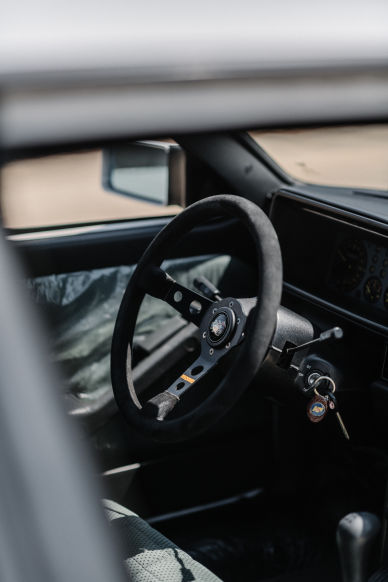

Photographed by Courtney Frisk
For example, I have a friend that imports cars from Japan to Canada. I ended up giving him a short list of cars and said, ‘If you find any of these, let me know.’ On that list was an Alfa SZ and, low and behold, there was one at auction and we ended up buying it out of Japan. And when it came over, the thing was perfect. It didn't even need oil; the oil was fresh in it. We made decent money on it and so I started to really look at that model and background.
Throughout this journey, I’ve also learned that Japan has cars that are oftentimes with records, which unfortunately Europe doesn't always have. And, they just seem to do a better job of maintaining these cars. And so, I end up buying a lot of cars in Japan. Even though, recently I've bought some cars in Europe, including one from Switzerland not that long ago.
I still have a day job today, so I knew that if I really wanted to do something with a limited budget and limited time that it had to be something very unique, so I ended up evolving EuroClassix to focus on cars that were never made available here when new but which have become eligible for importation because they are at least 25 years old. I've imported quite a few different cars now but the one that I've imported the most is the Lancia Delta Integrale, and I feel like I know those cars very, very well now.
Photographed by Courtney Frisk
Aaron: What percentage of the cars that you bring in come from Japan versus come from Europe?
Marco: Probably 90% of my cars come from Japan. Every two years in Japan you have to have your car checked and it's something that they take fairly seriously. And so, a lot of times, that creates a lot of records for a car, which is very nice. For example, I've got a 20,000-kilometer Evo 1 Integrale that's arriving today or tomorrow. It has low mileage and documentation from day one, all the history of all the checks every two years. You can just see the mileage and history.
The other thing that's probably even more important is that many of these cars, especially Integrales, need regular maintenance. When I get the car, those cars that have been regularly maintained are just more trouble free. And finally, when there is something that's done to the car, I feel like in Japan – compared to Italy, at least – they don't cut corners. If they're going to paint something, they'll do a good job. Of course, I'm making generalizations here – there's some great people in Italy and all over Europe that are doing incredible work – but that's just been my personal experience.
Aaron: Let’s talk about the “25 Year Rule.” What’s the Cliff’s Notes overview of that restriction for someone who’s not familiar with it?
Marco: For cars to be sold new in the United States, they have to be federalized, which involves crash-testing and a whole bunch of other things. Back in the day, this process used to cost something like a million dollars and I’m sure it’s much, much more now. I think manufacturers had to provide seven or eight cars to the Department of Transportation for them to do all the crash testing to approve the car – and that's assuming that it even gets approved.
Photographed by Courtney Frisk
Well, all of that and all of the federal-level DOT and EPA restrictions all go away when the car turns 25. So I tell people, “If you look at an issue of Car & Driver or Road & Track magazine, the January edition will usually have an article to the effect of "Here are 10 cool cars that are now eligible to be brought in [to the United States]."
Now, you still may have issues at a state level, of course. I live in California, which is notorious for smog restrictions and everything else, so there are still some issues potentially. But there are outfits that will get the car smog compliant here in California.
The big thing, though, is not having to worry about the EPA or the DOT, and that all goes away after 25 years.
Aaron: And so, what if I’m really lusting after a car that is, say, only 18 years old and was never sold in the U.S. Is there any way around this? Or do I just have to wait for seven years?
Marco: The best answer is to wait seven years. I have seen people do a couple other things, though. The first is that, if you have the money, you can buy it and hold it [outside the United States] because, as these cars approach 25 years, the value just naturally goes up as the demand increases in the U.S. market. So, the Skyline GTRs, for example, as soon as they come close to 25 years, the prices in Japan go up.

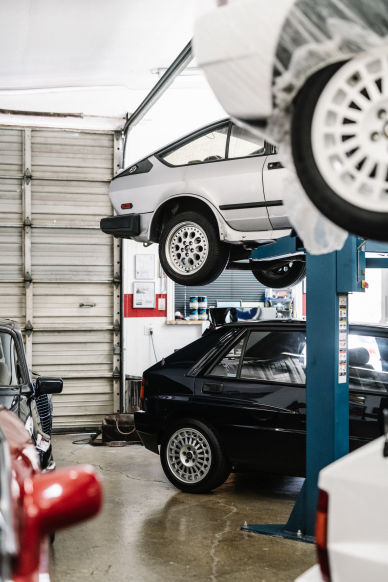
Photographed by Courtney Frisk
The other thing that you can do, depending on the car, is you could potentially bring it in for “Show and Display.” However, there are two issues with that. The first is that I don't believe you're allowed to really drive it on the street, and then, at some point, you need to send it back where it came from, so it’s complicated. I generally advise people by saying, "If you really, really, really want it, Canada has a 15-year rule instead of our 25-year rule." And so, in your example, I have ways to buy the car, send it to Canada, store it there legally, keep it safe, and then, when it's eligible for import, bring it to the United States.
Aaron: It strikes me that this line of work could quickly become less about cars than it is about paperwork and navigating government bureaucracy. How do you keep the passion for the cars alive through all this?
Marco: There are times where it's honestly hard, especially, if you get a car and there are some challenges, or I don't have a lot of time. And I honestly don't have a lot of money to do this, but it’s not really about the money. I recently imported an Autozam AZ-1 for someone. You're talking maybe low- to mid-$20,000s for a really cool little car. To see the look on the owner’s face! I got to drive it around, too, because I always want to make sure that the cars are okay, and it was just such a cool experience.
So, sure, sometimes I get over-subscribed, so to speak, and the market goes in waves. Sometimes I sell no cars for three months, and then three cars in a single week. The thing that gets me going, though, is seeing the cars arrive for the first time. I was just in Italy and I bought some motorcycles and I can't wait to see them here and get them registered – that's what keeps me going.
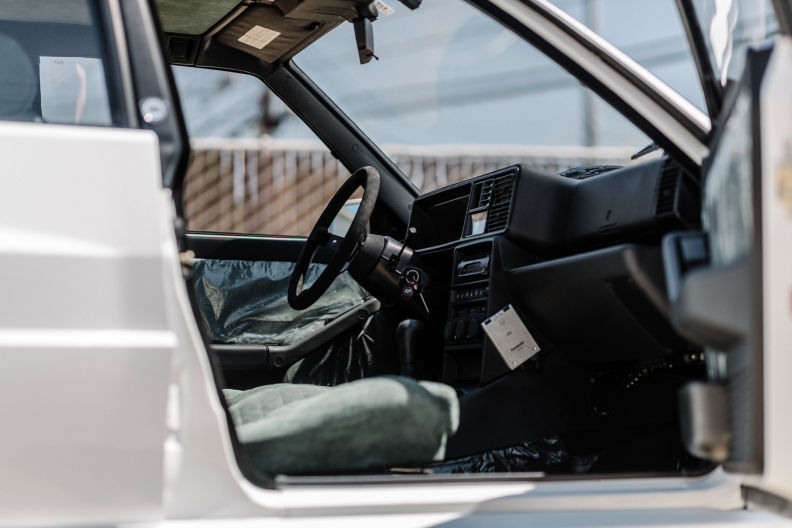
The other satisfying part of it is the ability to meet some really cool people that I have a lot in common with. I mean, honestly, most of the people that I sold cars to are people that I'd love to just hang out with regardless because we're into the same thing.
Aaron: Put your psychologist hat on for a moment. In the United States, we tend to want the Euro and JDM cars that were never sold new here. In Australia and Japan and Sweden, they want our 1960s and 1970s muscle cars. All those countries make great cars of their own, so why do you think it is that a certain group of people always seems to want what someone on the other side of the world has?
Marco: That's a great question. I think that if you look at the cars produced in any country, there are a few that represent the cream of the crop, the top 2-5% of cars that are just special but which may not be available in some other parts of the world. Take the Integrale, for example, On paper, there's nothing special about it. I mean, it did win the World Rally Championship six times, but with only four cylinders and 215 horsepower in a four-door car, if I told you that this is a great car it’d be hard for me to get you excited about it. But when you drive it? It's wonderful.
And there are just so many cars like this, cars like the Renault 5 Turbo that I mentioned before. In Australia, they have that Holden SS. People write about them or you look at Top Gear or some of these other shows and they try them out. And you know that there's something magical about the car that’s just hard to put on paper or on video. You just have to get your hands on it and try it.


Photographed by Courtney Frisk
Aaron: What are some of the coolest, or oddest, or most challenging cars that you've been tasked with finding or importing?
Marco: There have been some Alfas. Part of the challenge with the older Alfas is just finding one in good shape. Sometimes it's not a matter of finding a particular model, but rather of finding the one that's clean. Take the Junior Zagato Alfas: you can find them, but a lot of them have rust. There are some older Lancias out there that people have asked me to find for them, too, and sometimes I just can't find one where we're comfortable enough to pull the trigger.
I wish I had the time to travel around the world. I'm not any sort of car expert, but at least I could see the car in-person and drive it and take a magnet to it, make sure everything's right, that it's not leaking oil, and not seven different shades of whatever color the car is. Pictures are great, but they really, really, really don't give you the full picture of the car.
With vintage cars, you can find them, but finding the right one is the real challenge. I don't feel comfortable committing to buying a car for someone unless I feel like I know that it's the right one, and I can't do that unless I (or someone I trust) is there in-person. I mean, if we're talking like an AZ-1 or something where there are quite a few and I have people in Japan that can inspect the car, that's one thing, but an AZ-1 is also a much more modern car, not a 1970s car or 1960s car where there was no rust protection. When you go from a 25-year old car to a 50-year old car, the challenge increases exponentially.
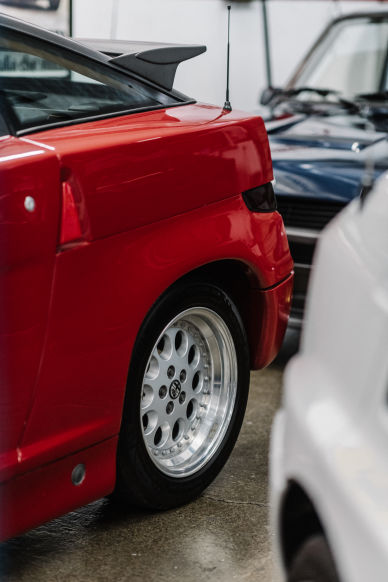
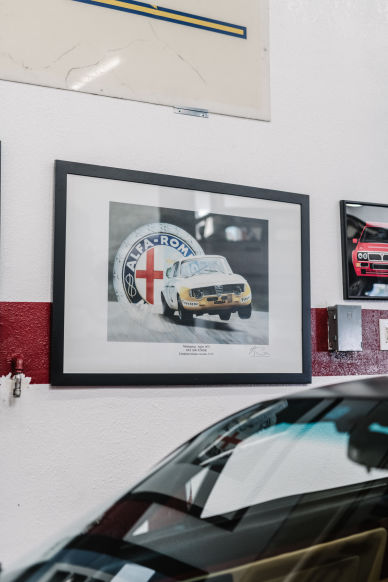
Photographed by Courtney Frisk
Aaron: Since you’ve been doing this, what’s been the most surprising thing you've learned about either the car industry or the process of importation?
Marco: Two things have been surprising. First, I’ve been pleasantly surprised by just how cool some of these people are. I certainly go through and do my best to make sure a car's dialed in but, on occasion, something happens, and most people are so gracious about it. I am mortified if something happens so of course I take care of it. If the car is far away, I'll tell them, "Let's find a shop, and I'll take care of it. I'm so sorry." I guess because they’re car people, too, they know these things can happen. I can drive a car for 60-100 miles and it won’t present any problems and then a week into the person owning it, maybe a belt goes out or something. You just can't control those things. But the graciousness with which people respond to those situations has been so surprising. That's probably the thing that sticks out the most.
The other thing that's surprising is the network of people I have come to rely upon to get things done, either because I just don't have the time or because I can’t be everywhere. This has become a pretty cool part of my life and those people have become friends. I just never thought through where this could lead but it’s been really exciting and rewarding. We have this common thread between us around these cars, and this is by far the most rewarding part. You can go do cool things, but it's experiences with people – having friends over for dinner, going for a walk, the most basic things that involve the people that you like to surround yourself with – that are ultimately the most rewarding.
Photographed by Courtney Frisk
Aaron: On your website, you credit the Gary Vaynerchuck book Crush It as being an inspiration for starting EuroClassix. What specifically did you take from that book and how has it guided your thinking?
Marco: What I took from that book is that success in life is enjoying what you do, loving what you do because if you love what you do, you're going to naturally excel at it. I love my full time job in digital marketing but cars and motorcycles are my passion, and so after reading that book I started thinking, "Maybe I can do this. Maybe I can get my car out of the garage, because my wife doesn't like the smell of non-catalytic gas and oil and stuff. Maybe I can do this just enough to pay the bills and have a little bit of fun at the same time." And that's where I am right now.
The reality is that if I look at my inventory – as well as my ‘sold’ inventory – there's no way I could afford any of these cars. Well, maybe one or two here and there, but there's no way that I could afford to touch the types of cars that I have at that quantity. I also have limited space and limited time, but I’m having fun right now. And hopefully I’m getting smarter on what to buy, and continuing to make little tweaks here and there. Maybe one day, if I get to the point where I don't have a day job anymore, then I'll reassess, and see if it's something I want to do a little more seriously, but for now, it's great.
Crush It was the book that made me think, "I should probably do this a little bit more officially." I'm not doing anything that is going to make me think about quitting my day job yet, but it pays for itself and I'm having fun and, at the end of the day, that's what I was looking to do.
More about EuroClassix
You can learn more about EuroClassix via their website, and can follow along with their newest endeavors by checking them out on Instagram (@euroclassixcars).
Meet our contributors
San Francisco-based automotive photographer Courtney Frisk first picked up a camera as a child, and reportedly hasn't put it down since. Her perception of cars as art is apparent in her stunning photography, which you can see more of on her Instagram (@misscourtneymae).
Aaron McKenzie is a Los Angeles based writer, photographer, and producer with an eye for all things automotive. You can see more from him by checking out his Instagram (@aaronwmckenzie).
Comments (...)
What to read next

Antares Au's full throttle shift from Wall Street to race track
0 comments
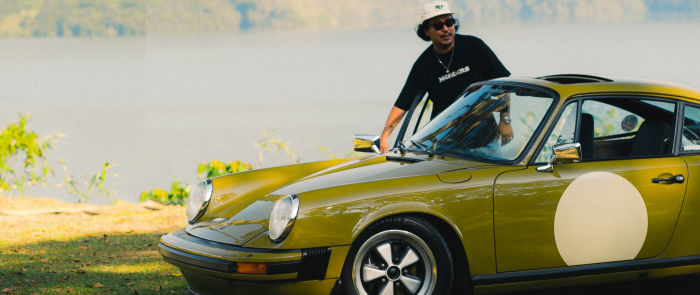
This Malaysian Porsche 911 went from scrapheap to showstopper
0 comments
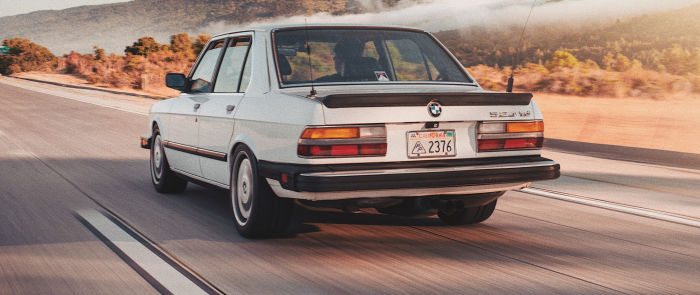
Enthusiast Roundtable: The BMW E28 is a classic driver for the modern world
0 comments
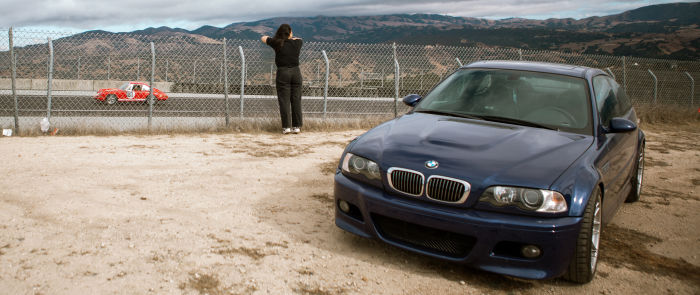
How Rennsport Reunion 7 transcends Porsche as the ultimate enthusiast gathering
2 comments
Before you get started
Please verify your account. You can do so by clicking on the link in the email we sent you.
Can't find your verification email? Click to resend it.
This website uses cookies. We do this to better understand how visitors use our site and to offer you a more personal experience. We share information about your use of our site with social media and analytics partners in accordance with our Privacy Policy. Additional information for California residents

